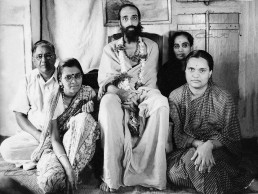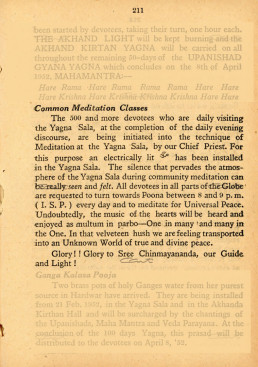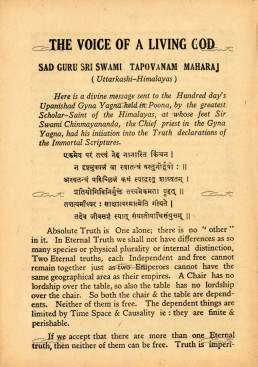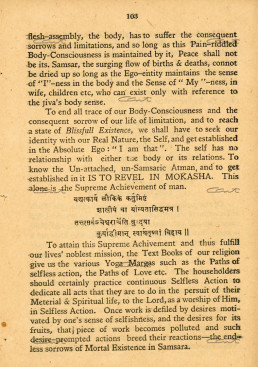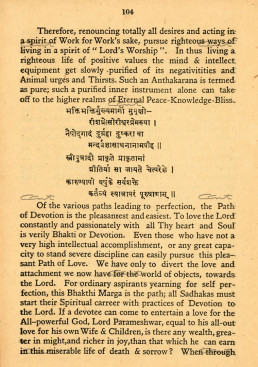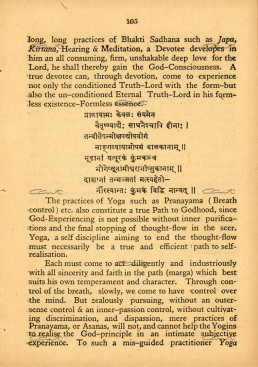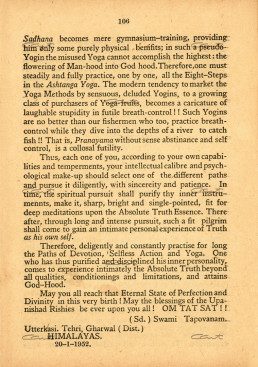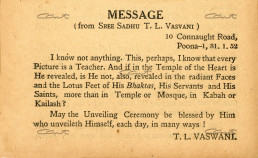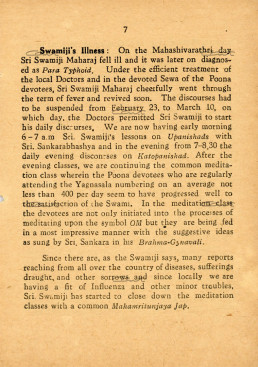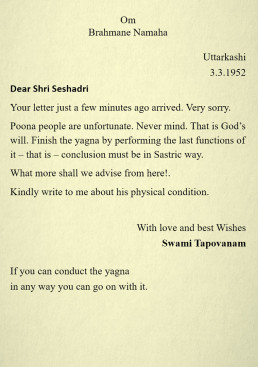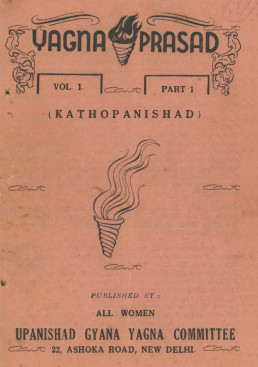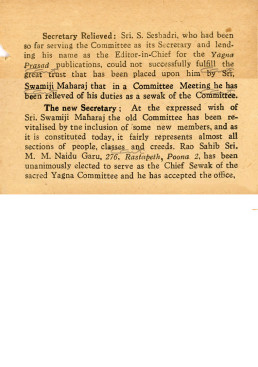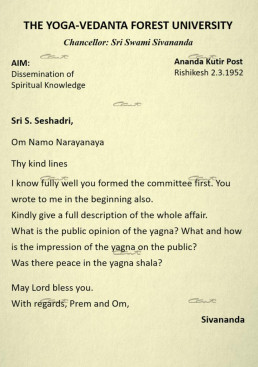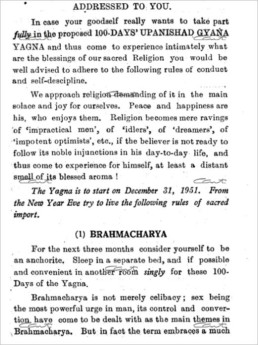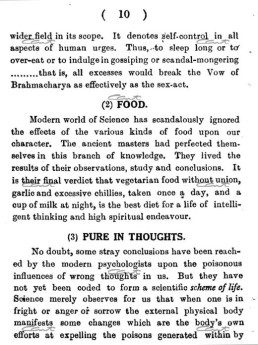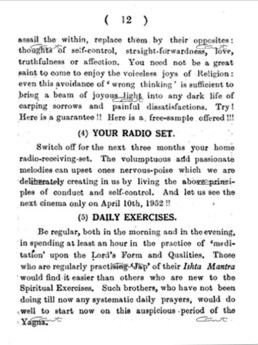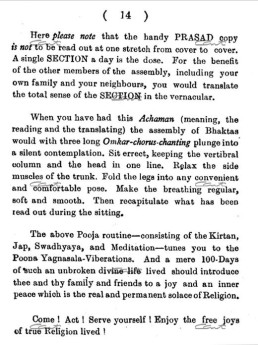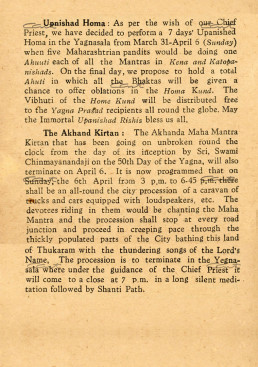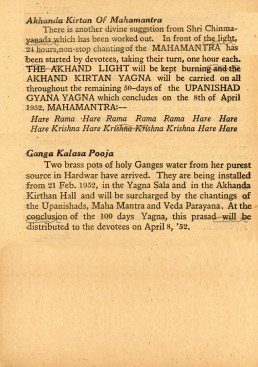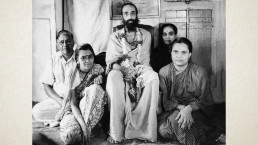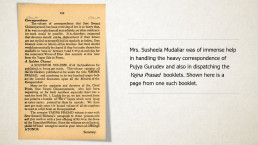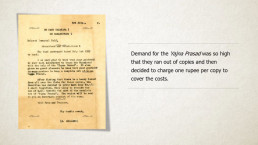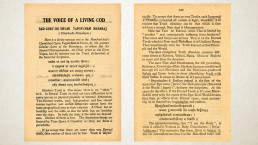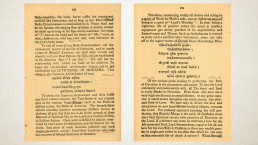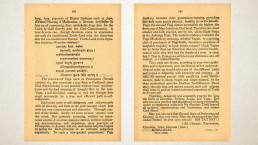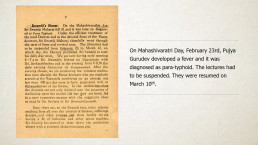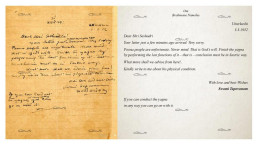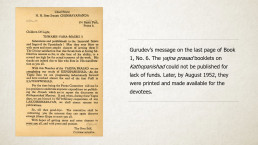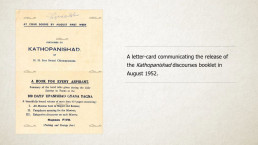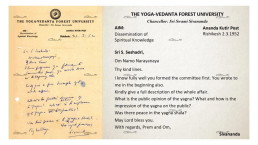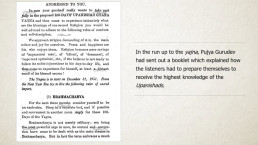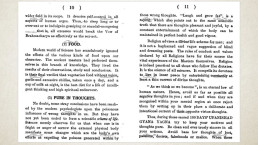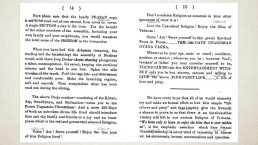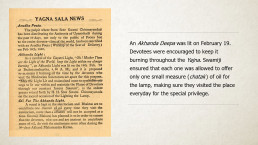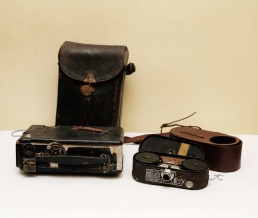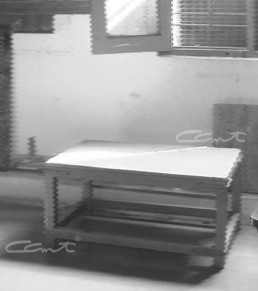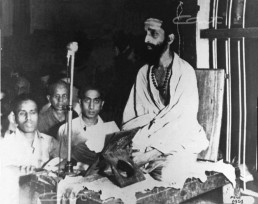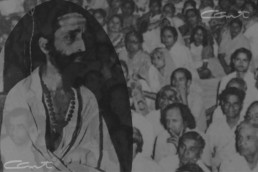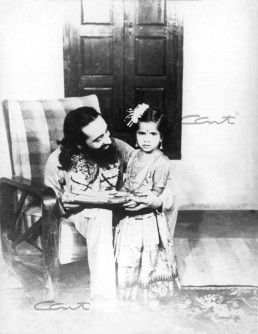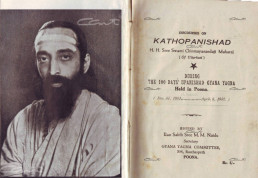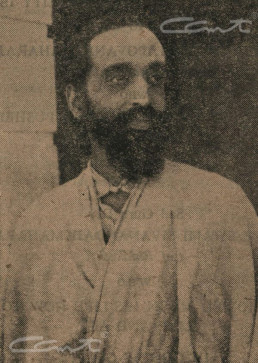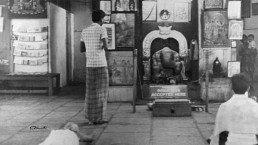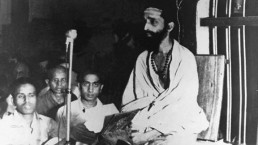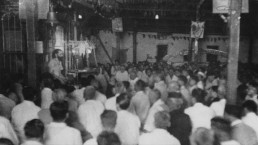This short video tells us the story of how Swami Chinmayananda having received the blessings of his Gurus, conducted the first Jnana Yajna, a 100-day event that transformed the lives of the attendees.
SIMPLICITY OF THE CHIEF PRIEST
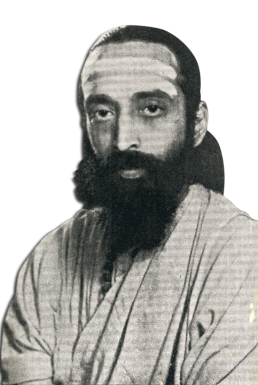
Pujya Gurudev called himself the Chief Priest of the jnana yajna. He stayed in a small place near the temple. He would walk to the house of any person who offered him bhiksha. When his clothes got worn out, he would dye the white material offered traditionally by devotees manually, using a gerua stone. His doors were always open for people to clarify their doubts. Morning and evening, he would walk punctually to the temple to deliver his lectures.
Sri. Naidu describes the hardships faced by Gurudev.
Sri. G.N. Rajagopal attended the 1st Jnana Yajna.
SUSHEELA MUDALIAR
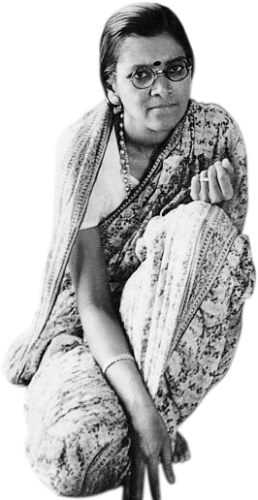
Among the early devotees attracted by the power of the talks and the personality of the speaker was Susheela Mudaliar. She worked in the postal department and was of immense help in handling the heavy correspondence of Pujya Gurudev at this stage and also in dispatching the yajna prasad booklets. Letters poured in and there was a tremendous demand for yajna prasad, which seemed to connect with people immediately and often draw them to the yajnashala also. In fact, they ran out of copies of yajna prasad and then decided to charge one rupee per copy to cover the costs.
Susheela Mudaliar served Gurudev in many ways. She would bring food for him, sometimes wash his clothes, serve as a secretary and do many kinds of odd jobs as well. In fact, she began to function as his right hand and for the subsequent yajnas, Gurudev would often refer people to her to learn how to organize a jnana yajna.
Sri. Naidu talks about Smt. Susheela Mudaliar
Smt. Sheel Dewan talks about Smt. Susheela Mudaliar
THE UNVEILING

On January 31, 1952, which was also the Basant Panchami Day, a special Guru Puja was held. The portraits of Swami Sivananda Maharaj and Swami Tapovan Maharaj were unveiled formally at the yajnashala by Dr. Shankar from Deccan College. Swami Tapovan Maharaj sent a message in Sanskrit verses, which was read out and explained by the Chief Priest Swami Chinmayananda.
It was also decided that at the end of the evening lecture (7:00 to 8:30) every day, a common meditation session for half an hour would be held and arati performed to both Gurus. The unveiling ceremony was the most appropriate because Pujya Gurudev was unveiling the true essence of the Gurus in the hearts of the listeners.
SWAMIJI FALLS ILL

On Mahashivaratri Day, February 23rd, Pujya Gurudev developed a fever and it was diagnosed as para-typhoid. The lectures had to be suspended for a week. Swami Tapovan Maharaj was informed and he sent a message. On March 10, the sessions were resumed. By this time, Kenopanishad had been completed and they were studying Kathopanishad. The meditation sessions, where the intricacies of Om upasana and the significance of the Brahmajnanavali verses were revealed, created immense interest and people walked from distant places to attend the evening discourses.
At this time, S. Seshadri, the secretary, was relieved and a new secretary appointed. The yajna prasad booklets on Kathopanishad could not be published for lack of funds. Later, by August 1952, they were printed and made available for the devotees
TAPAS OF THE SEEKERS

In the run up to the yajna, Pujya Gurudev had sent out pamphlets and a booklet which explained how the listeners had to prepare themselves to receive the highest knowledge of the Upanishads. In very brief and practical terms, he detailed in simple English the virtues of sadhana chatushtaya, essential for any spiritual seeker. The dos and don’ts were spelt out clearly: maintain celibacy and self-control in all aspects of life, eat simple sattvic food, maintain purity of thoughts, avoid distraction through the radio (now cell phones and television) or cinema, practise regular prayer, japa and meditation and so on.
The booklet also contained the letters from Swami Sivananda, blessing this unique endeavour of his dear disciple and a bird’s eye-view of the yajna scheme, indicating what the seekers were to expect.
AKHANDA KIRTAN AND UPANISHAD HOMA
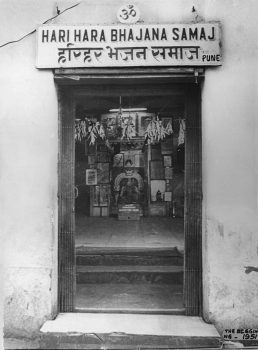
Active participation of the devotees was ensured through the akhanda kirtan right from the beginning of the yajna. Each one was allowed to offer only one small measure (chatak) of oil for the lamp, making sure that they visited the place every day for the special privilege! People would take turns in batches to continue the kirtan and in the lean hours of late night and early dawn, Gurudev himself would pitch in. The akhanda kirtan culminated in a massive procession in the city on April 6, heralding the conclusion of the yajna on April 8. A caravan of cars and trucks wove through the city, filled with devotees chanting the maha-mantra. The procession ended in silent meditation at the yajnashala.
A week-long Upanishad Homa had been planned by Gurudev months earlier. This was held in the final phase of the jnana yajna, from March 31 to April 6. Five Maharashtrian priests officiated, offering ahuti with the mantras of Kenopanishad and Kathopanishad. On the final day, the devotees were also given the opportunity to offer ahuti.
Sri. Naidu describes the Akhanda Kirtana.
Sri. Naidu recollects the grand procession at the end of the Yajna.
THE GRAND FINALE

The 100-day ‘Upanishad Gyana Yagna’ concluded on April 8, leaving the devotees yearning for more. After conducting another public meeting in Tilak Nagar on April 9, Gurudev moved on to Palakkad to conduct a sadhana camp. Those who attended the yajna had been transformed forever. The seeds put in their hearts flourished in different ways, in different times, some of them growing in different places, towns and cities in the form of branches of Chinmaya Mission, spreading the message of the Upanishads through the years to come. Today, hundreds of swamis, brahmacharis and householder devotees continue the teaching all over the globe. The strong roots of Chinmaya Mission have spread across countries and continents. It is the duty of each one of us to water and nourish this tree of knowledge planted by Pujya Gurudev.
Memories from the 1st Jnana Yajna
SIMPLICITY OF THE CHIEF PRIEST
Pujya Gurudev called himself the Chief Priest of the jnana yajna. He stayed in a small place near the temple. He would walk to the house of any person who offered him bhiksha. When his clothes got worn out, he would dye the white material offered traditionally by devotees manually, using a gerua stone. His doors were always open for people to clarify their doubts. Morning and evening, he would walk punctually to the temple to deliver his lectures.
SUSHEELA MUDALIAR
Among the early devotees attracted by the power of the talks and the personality of the speaker was Susheela Mudaliar. She worked in the postal department and was of immense help in handling the heavy correspondence of Pujya Gurudev at this stage and also in dispatching the yajna prasad booklets. Letters poured in and there was a tremendous demand for yajna prasad, which seemed to connect with people immediately and often draw them to the yajnashala also. In fact, they ran out of copies of yajna prasad and then decided to charge one rupee per copy to cover the costs.
Susheela Mudaliar served Gurudev in many ways. She would bring food for him, sometimes wash his clothes, serve as a secretary and do many kinds of odd jobs as well. In fact, she began to function as his right hand and for the subsequent yajnas, Gurudev would often refer people to her to learn how to organize a jnana yajna.
THE UNVEILING
On January 31, 1952, which was also the Basant Panchami Day, a special Guru Puja was held. The portraits of Swami Sivananda Maharaj and Swami Tapovan Maharaj were unveiled formally at the yajnashala by Dr. Shankar from Deccan College. Swami Tapovan Maharaj sent a message in Sanskrit verses, which was read out and explained by the Chief Priest Swami Chinmayananda.
It was also decided that at the end of the evening lecture (7:00 to 8:30) every day, a common meditation session for half an hour would be held and arati performed to both Gurus. The unveiling ceremony was the most appropriate because Pujya Gurudev was unveiling the true essence of the Gurus in the hearts of the listeners.
SWAMIJI FALLS ILL
On Mahashivaratri Day, February 23rd, Pujya Gurudev developed a fever and it was diagnosed as para-typhoid. The lectures had to be suspended for a week. Swami Tapovan Maharaj was informed and he sent a message. On March 10, the sessions were resumed. By this time, Kenopanishad had been completed and they were studying Kathopanishad. The meditation sessions, where the intricacies of Om upasana and the significance of the Brahmajnanavali verses were revealed, created immense interest and people walked from distant places to attend the evening discourses.
At this time, S. Seshadri, the secretary, was relieved and a new secretary appointed. The yajna prasad booklets on Kathopanishad could not be published for lack of funds. Later, by August 1952, they were printed and made available for the devotees
TAPAS OF THE SEEKERS
In the run up to the yajna, Pujya Gurudev had sent out pamphlets and a booklet which explained how the listeners had to prepare themselves to receive the highest knowledge of the Upanishads. In very brief and practical terms, he detailed in simple English the virtues of sadhana chatushtaya, essential for any spiritual seeker. The dos and don’ts were spelt out clearly: maintain celibacy and self-control in all aspects of life, eat simple sattvic food, maintain purity of thoughts, avoid distraction through the radio (now cell phones and television) or cinema, practise regular prayer, japa and meditation and so on.
The booklet also contained the letters from Swami Sivananda, blessing this unique endeavour of his dear disciple and a bird’s eye-view of the yajna scheme, indicating what the seekers were to expect.
AKHANDA KIRTAN & UPANISHAD HOMA
Active participation of the devotees was ensured through the akhanda kirtan right from the beginning of the yajna. Each one was allowed to offer only one small measure (chatak) of oil for the lamp, making sure that they visited the place every day for the special privilege! People would take turns in batches to continue the kirtan and in the lean hours of late night and early dawn, Gurudev himself would pitch in. The akhanda kirtan culminated in a massive procession in the city on April 6, heralding the conclusion of the yajna on April 8. A caravan of cars and trucks wove through the city, filled with devotees chanting the maha-mantra. The procession ended in silent meditation at the yajnashala.
A week-long Upanishad Homa had been planned by Gurudev months earlier. This was held in the final phase of the jnana yajna, from March 31 to April 6. Five Maharashtrian priests officiated, offering ahuti with the mantras of Kenopanishad and Kathopanishad. On the final day, the devotees were also given the opportunity to offer ahuti.
THE GRAND FINALE
The 100-day ‘Upanishad Gyana Yagna’ concluded on April 8, leaving the devotees yearning for more. After conducting another public meeting in Tilak Nagar on April 9, Gurudev moved on to Palakkad to conduct a sadhana camp. Those who attended the yajna had been transformed forever. The seeds put in their hearts flourished in different ways, in different times, some of them growing in different places, towns and cities in the form of branches of Chinmaya Mission, spreading the message of the Upanishads through the years to come. Today, hundreds of swamis, brahmacharis and householder devotees continue the teaching all over the globe. The strong roots of Chinmaya Mission have spread across countries and continents. It is the duty of each one of us to water and nourish this tree of knowledge planted by Pujya Gurudev.
Sri. Naidu recollects the grand procession at the end of the Yajna.
Related Views
Story Behind The First Jnana Yajna
The fascinating effort of a young Swami Chinmayananda, to launch the Jnana Yajna program, with the help of a young Madrasi boy from Pune.
Reliving The First Jnana Yagna – Part 1
It was December 1951. A young Swami Chinmayananda was ready to launch the first Jnana Yagna, the forerunner of many more to come.
Reliving The First Jnana Yagna – Part 2
The story of how Pujya Gurudev successfully conducted the first Jnana Yajna, a 100-day event that transformed the lives of the attendees.
